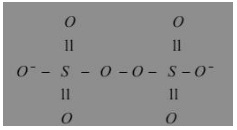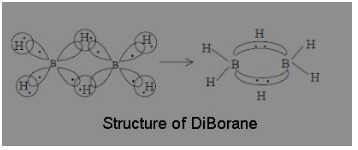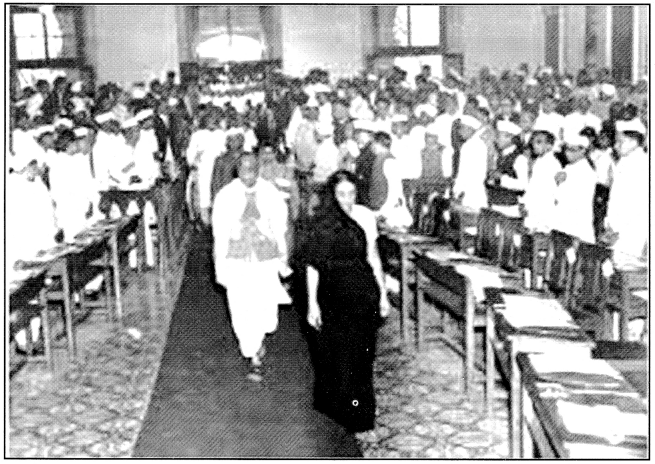MCQ Questions for Class 11 Chemistry Chapter 10 The s-Block Elements with Answers
Students are advised to practice the NCERT MCQ Questions for Class 11 Chemistry Chapter 10 The s-Block Elements with Answers Pdf free download is available here. MCQ Questions for Class 11 Chemistry with Answers are prepared as per the Latest Exam Pattern. Students can solve these The s-Block Elements Class 11 MCQs Questions with Answers and assess their preparation level.
The s-Block Elements Class 11 MCQs Questions with Answers
Solving the The s-Block Elements Multiple Choice Questions of Class 11 Chemistry Chapter 10 MCQ can be of extreme help as you will be aware of all the concepts. These MCQ Questions on The s-Block Elements Class 11 with answers pave for a quick revision of the Chapter thereby helping you to enhance subject knowledge. Have a glance at the MCQ of Chapter 10 Chemistry Class 11 and cross-check your answers during preparation.
Question 1.
Beryllium shows diagonal relationship with
(a) Mg
(b) Na
(c) Al
(d) B.
Answer
Answer: (c) Al
Explanation:
Just as Li shows resemblance with its diagonally opposite element Al. This is because the two elements have the same electronegativity (Be = 1.5, Al = 1.5) and possess similar polarizing power (i.e., charge/radius).
Question 2.
Which of the following metal has stable carbonates?
(a) Na
(b) Mg
(c) Al
(d) Si
Answer
Answer: (a) Na
Explanation:
When carbonates are heated they decompose to form the oxide. Sodium carbonate and potassium carbonate do not decompose. The carbonates become more difficult to decompose as we go down the group.
Question 3.
The reaction of Cl2 with X gives bleaching powder X is
(a) CaO
(b) Ca(OH)2
(c) Ca(OCl)2
(d) Ca(O3Cl)2
Answer
Answer: (c) Ca(OCl)2
Explanation:
Calcium hypochlorite is a compound with formula Ca (ClO)2. As a mixture with lime and calcium chloride, it is marketed as chlorine powder or bleach powder for water treatment and as a bleaching agent.
Calcium hypochlorite is produced industrially by treating lime (Ca(OH)2) with chlorine gas.
2Cl2 + 2Ca(OH)2 → Ca(OCl)2 + CaCl2 + 2H2O
Question 4.
NaOH is prepared by the method
(a) Downs cell
(b) Castner cell
(c) Solvay process
(d) Castner – Kellner cell.
Answer
Answer: (d) Castner – Kellner cell.
Explanation:
In the Castner-Kellner method, electrolysis of brine solution is performed in order to obtain sodium hydroxide.
Question 5.
Milk of lime reacts with chlorine to form ________, a constituent of bleaching powder.
(a) Ca(OCI)2
(b) Ca(CIO2)2
(c) Ca(CIO3)2
(d) Ca(CIO4)2
Answer
Answer: (a) Ca(OCI)2
Explanation:
Milk of lime reacts with chlorine to form bleaching powder.
2Ca(OH)2 + 2Cl2 → CaCl2 + Ca(OCl)2 + 2H2O
Question 6.
Which one of these are main components of kidney stones?
(a) Sodium Oxalate
(b) Potassium Oxalate
(c) Calcium Oxalate
(d) Copper Oxalate
Answer
Answer: (c) Calcium Oxalate
Explanation:
Calcium oxalate is the main component of kidney stone.
Question 7.
A nitrate of an alkali metal M on heating gives O2.NO2 and M2O. The metal M will be:
(a) Na
(b) K
(c) Rb
(d) Li
Answer
Answer: (d) Li
Explanation:
All group 1 compounds (metal nitrates) decompose to give metal nitrates and
oxygen → 2MNO3 → 2MNO2 + O2
Since Lithium shows diagonal relationship with magnesium, it shows different behaviour
4LiNO3 → 2Li2O + 4NO2 + O2
(Its nitrate decomposes like Group 2 elements)
Question 8.
Which of the following metal carbonates decompose on heating?
(a) LiCO3 & MgCO3
(b) Na2CO3
(c) K2CO3
(d) None of the Above
Answer
Answer: (a) LiCO3 & MgCO3
Explanation:
Lithium carbonate and magnesium carbonate are thermally unstable. They decompose on heating. Properties of Li are similar to Mg because of diagonal relationship.
Li2CO3 → Li2O + CO2
MgCO3 → MgO + CO2
Li2CO3 and MgCO3 are salts of weak acid (CO2) with weak bases LiOH and Mg(OH)2. On the other hand, NaOH and KOH are much stronger bases and can hold the CO2 easily. Thus, sodium carbonate and potassium carbonate are thermally stable. They do not decompose on heating.
Question 9.
Which of the following alkaline earth metals do not impart any color to the flame?
(a) Ca,Sr
(b) Mg,Ca
(c) Be,Mg
(d) Sr,Ba
Answer
Answer: (b) Mg,Ca
Explanation:
Relative to other group 2 elements, Be and Mg atoms are smaller in size. Thus, the electrons in Be and Mg are too strongly bound to get excited by flame. In other words, the energy required to excite electrons in Be and Mg atoms does not lie in the visible range.
Question 10.
Which one of the following alkali metals emit light of longest wavelength in the flame test ?
(a) Na
(b) K
(c) Cs
(d) Li
Answer
Answer: (b) K
Explanation:
Actually Rb emits the longest wavelength light in flame test. Since Rb is one there in the options, therefore, correct option should be K
Question 11.
What will be final weight of 286 gm Na2CO3.10H2O by Heating at 373 K?
(a) 206 gm
(b) 162 gm
(c) 186 gm
(d) 124 gm
Answer
Answer: (d) 124 gm
Question 12.
Solubilities of carbonates decrease down the magnesium group due to decrease in
(a) Entropy of solution formation
(b) Lattice energies of solids
(c) Hydration energy of cations
(d) Inter – ionic attraction.
Answer
Answer: (c) Hydration energy of cations
Explanation:
The stability of the carbonates of the alkaline earth metals increases on moving down the group. The solubility of carbonate of metals in water is generally low. However, they dissolve in water containing CO2 yielding bicarbonates, and this solubility decreases on going down in a group with the increase in stability of carbonates of metals, and decrease in hydration energy of the cations.
Question 13.
What are the products formed when Li2CO3 undergoes decomposition?
(a) Li2O2, CO
(b) Li2O, CO
(c) Li2O, CO2
(d) LiO2, CO
Answer
Answer: (c) Li2O, CO2
Explanation:
Lithium carbonate is unstable carbonate due to polarizing power of Li+. Hence it undergoes easy dissociation just like alkaline earth metal carbonates upon heating to give lithium oxide and carbon dioxide.
Li2CO3 → Li2O + CO2
Question 14.
Alkali metals give a _________ when dissolved in liquid ammonia
(a) Deep blue solution
(b) Colourless
(c) Red colour
(d) None of the Above
Answer
Answer: (a) Deep blue solution
Explanation:
When an alkali metal is dissolved in liquid ammonia, it results in the formation of a deep blue coloured solution. The ammoniated electrons absorb energy corresponding to a red region of visible light. Therefore, the transmitted light is blue in colour.
Question 15.
_______ does not exhibit coordination number more than four.
(a) Magnesium
(b) Beryllium
(c) Calcium
(d) None of the Above
Answer
Answer: (b) Beryllium
Explanation:
Beryllium does not exhibit coordination number more than four as in its valence shell there are only four orbitals. The remaining members of the group can have a coordination number of six by making use of d-orbitals.
Question 16.
The composition of Sorels cement is
(a) KCl × MgCl2 × 6H2O
(b) MgCl2 × 5MgO × (xH2O)
(c) MgCO3 × CaCO3
(d) CaSO4 × 2H2O
Answer
Answer: (b) MgCl2 × 5MgO × (xH2O)
Explanation:
Mixture of MgCl2 and MgO is called Sorels cement. It is MgCl2 × 5MgOx (xH2O).
Question 17.
Which of the following metals is most commonly used in photo – chemical cells?
(a) Lithium
(b) Calcium
(c) Caesium
(d) Francium
Answer
Answer: (c) Caesium
Explanation:
Among the given metals, Cesium(Cs) has lowest ionization enthalpy. Hence it loses electrons readily. Therefore, cesium is used in solar cells.
Question 18.
he wire of flash bulb is made up of:
(a) Mg
(b) Ag
(c) Cu
(d) Ba
Answer
Answer: (a) Mg
Explanation:
Magnesium metal is used for the preparation of the wire of flash bulb.
Question 19.
Which of the following metals is not manufactured by electrolysis ?
(a) Na
(b) Mg
(c) Al
(d) Fe
Answer
Answer: (d) Fe
Explanation:
Method of extraction of a metal depends on the reactivity of the metal. Iron (Fe) is not manufacture by electrolysis. Moderately reactive metals like zinc and iron are extracted by reduction of their oxides using carbon.
Question 20.
Which elements of s- block are largely found in biological fluids?
(a) Sodium, Potassium
(b) Magnesium and Calcium
(c) Both (1) and (2) are true
(d) None of the Above
Answer
Answer: (c) Both (1) and (2) are true
Explanation:
Mono valent sodium and potassium ions and divalent magnesium and calcium ions are found in large proportions in biological fluids. These ions perform important biological functions such as maintenance of ion balance and nerve impulse conduction.
Hope the information shared regarding the NCERT MCQ Questions for Class 11 Chemistry Chapter 10 The s-Block Elements with Answers Pdf free download is true and genuine as far as our knowledge is concerned. If you feel any information regarding CBSE Class 11 Chemistry The s-Block Elements MCQs Multiple Choice Questions with Answers is missing do reach us and we will look into it and add it accordingly.
MCQ Questions for Class 11 Chemistry Chapter 10 The s-Block Elements with Answers Read More »







